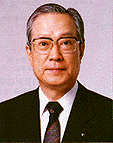
Takashi IMAI
Vice Chairman, Keidanren
With an increasing variety of market needs and the evolution of the advanced information society, world enterprises are conducting business activities ever more aggressively by rapidly mobilizing human, information, capital and other management resources across national boundaries and different industries.
Economic globalization has gathered momentum. In Japan also, from the standpoint of international harmonization, drastic institutional reform of corporate taxes, pensions and organizations is an urgent necessity.
Above all, the reform of corporate organizations necessitated by partial revisions of the Antitrust Act and the Commercial Code is indispensable for revitalization of enterprises as it will lead to the improvement of productivity and rationalization of management environment. The lifting of the 50-year-old ban on holding companies can be said to mark the first step in this direction.
At the same time, as market competition intensifies, accelerating the relentless process of selection in cheer corporate survival, businesses themselves must strive to reform their organizations so as to be capable of responding to changes with flexibility.
The point is to clearly define authorities and responsibilities. First, top management, based on the scenario for growth, should concentrate on the selection of appropriate business areas, distribution of management resources available, and proper personnel placement. And, in addition to the trimming of the administrative departments and the substantial delegating of authorities to the business departments, top management should continue to take steps to further flatten the organizational hierarchy and provide flexibility in adjusting the corporate organization to the changing tasks and needs. Furthermore, from top management down to the ranks, each employee is imperatively required to fulfill his responsibilities and carry through his job on a self-conclusive basis. In other words, employees in each business department, each having the awareness of his being a responsible party, make commitments to their respective goals to the head of the business department; the head of each business department, after strictly appraising such goals, puts together the projected role of his department and makes a commitment to the president; and the president integrates the commitments of individual business departments and makes his own commitment to the company's goal to the shareholders.
From now on, more and more companies will be introducing a companies-within-a-company system or self-supporting divisions. In my belief, such reform of the management software is the way to realize a tough and resilient corporate structure.